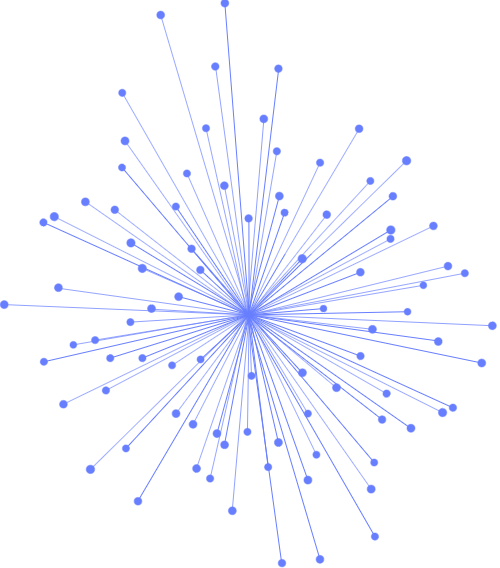
"I hadn't integrated Pandas with Python before joining my company. So it's very useful to consolidate my understanding of such skills via this course." JL, Data Analyst, Python for Data Analytics, March 2021








Real-world Applications: Apply Python to solve real-world financial problems and make data-driven decisions, with hands-on projects covering portfolio optimization, asset pricing, and risk assessment.
• The Anaconda distribution as Python Data Science platform
• Overview on Python virtual environment set-up
• Running Python code in Jupyter notebook
• Built-in data types in Python
• Working with strings, numbers, lists, tuples and dictionaries
• Control flow statements
• Conditional execution with if statements
• Conditional loops with where statements
• Looping over a sequence with for statements
• Defining and using custom functions
• Working with dates and times
• Accessing data on file (CSV, JSON, ...)
• Working with data in pandas


"I hadn't integrated Pandas with Python before joining my company. So it's very useful to consolidate my understanding of such skills via this course." JL, Data Analyst, Python for Data Analytics, March 2021

Sign up for the JBI Training newsletter to receive technology tips directly from our instructors - Analytics, AI, ML, DevOps, Web, Backend and Security.
Algorithmic Trading Strategies: Develop and implement algorithmic trading strategies using Python, covering topics such as moving averages, momentum trading, and statistical arbitrage.
Interactive Data Visualization: Harness the power of interactive data visualization tools like Plotly and Seaborn to communicate complex financial data insights effectively.
Machine Learning for Finance: Explore machine learning applications in finance, from predictive modeling for stock prices to sentiment analysis for trading signals, utilizing scikit-learn and TensorFlow.
Risk Management and Portfolio Optimization: Understand the principles of risk management and portfolio optimization, applying mathematical models to create well-balanced investment portfolios.
Time Series Analysis: Master time series analysis techniques for financial data, including autoregressive models, moving averages, and volatility forecasting, enhancing your ability to predict market trends.
Why should Quants learn Python programming skills?
Every individual venturing into the increasingly complex financial world recognises the value of quantitative analysis, or "quant." This data-analytical function is a game-changer in investment decision-making, risk management, pricing securities, and more. But to truly harness the power of quant, a modern tool is needed. Here comes Python, a generalised programming language that has steadily become a favorite among Quants. This article explores the reasons why Python training is invaluable for Quants.
Python's Versatility and Efficiency:
"How to enhance the diversity and efficiency of my data processing?" Ask this question and the answer points towards Python. The language's design allows it to manage different data formats, handle large data sets, and execute complex mathematical computations - all vital for quantitative analysis. The simplicity of Python code further enhances efficiency, which is critical for high-speed, real-time processes integral to finance.
Python Libraries: A Treasure Trove for Quants:
Python’s extensive libraries like NumPy, SciPy, Pandas, and Matplotlib come up when people ask, "What tools can streamline my quantitative finance tasks?". These libraries offer pre-written functions, saving time and effort in creating complex algorithms from scratch. Their applications range from statistical analysis, numerical computations, data manipulation to visualization - all of which are central to any Quant’s job.
Machine Learning (ML) and Artificial Intelligence (AI) Compatibility:
For Quants inquiring, "How can I incorporate ML & AI into my analysis?", Python provides the answer. It is one of the most used languages in AI and ML, with libraries like Scikit-learn, TensorFlow, and Keras. These technologies, combined with quantitative analysis, propel trading strategies, risk modeling, and market predictions to a whole new level of accuracy.
Python's Growing Popularity and Community:
Python has a rapidly expanding user community that helps improve and expand the language continuously. The broad ecosystem is always ready to solve "Who can answer my Python-related queries?". New tools, tutorials, and support from experienced Python users keep improving, which helps Quants to stay updated and solve coding problems efficiently.
Python Enhances Employability:
For Quants wondering, "How can I increase my value in the job market?", becoming proficient in Python is a sensible move. In an industry where the landscape is quickly shifting towards algorithmic-based strategies and automated risk analytics, a (Quant) well-versed in (Python) is a desirable asset to employers.
In conclusion, Python's scalability, versatility, and powerful features make it a potent tool in a Quant’s arsenal. Offering solutions to varied Quants’ queries, Python has proved its worth in the Quant world. By undertaking Python training, Quants open a new vista of opportunities, enhancing their capability to navigate the ocean of numbers, patterns, and trends that is modern finance. Investing time in mastering Python today is synonymous with investing in a flourishing Quant career tomorrow.
What makes Python a versatile programming language for a data analyst?
In the vibrant landscape of programming languages, Python emerges as a versatile frontrunner, with its radiance reaching far beyond the coding realm. It meanders through various domains like a mighty river, extending from web development and data analytics to AI and machine learning. What emboldens its versatility? The answer lies sequestered in its elegant simplicity, unrivaled flexibility, and extensive array of libraries.
Our Python data analytics course embraces beginners with its simplicity. It boasts the syntax of a high-level language, which gives it an excellent readability quotient and makes it accessible to programming novices. A script written in Python is more like reading an engrossing novel rather than deciphering cryptographic code, and it’s this user-friendly design that contributes to its soaring popularity amongst programmers. In Python's world, less is more; its philosophy encourages concise yet effective code.
The versatility of Python is also fortified by the formidable battalion of libraries it houses. The language is like a treasure chest filled with the exuberant gemstones of libraries, ready to be harnessed at a moment's notice. With NumPy and pandas for data manipulation, Matplotlib for data visualization, or TensorFlow and PyTorch for machine learning, Python's library collection is a generosity most other programming languages could only dream of offering.
And let's not forget the awe-inspiring flexibility. (Python) is a cross-platform language, meaning it soothes programmers' lives by being executable on various operating systems without hampering the performance. Given its interpretive nature, Python can run the code immediately after it's written, significantly reducing the edit-compile-run time and making it a go-to for rapid prototyping.
Conclusively, Python is the Swiss Army Knife of programming languages, playing multiple roles with ease and finesse. Its simplicity, flexibility, and extensive libraries foster an environment where creativity thrives, making it the versatile hero in the narrative of programming languages. Its notability secures its position in a league of its own, making it a protagonist that’s here to stay in the unfolding saga of computational technology.
What methods of study are available for Data analysis courses? ( PYTHON )
Our data analyst course offers various flexible methods of study to accommodate different learning styles:
The most effective programs use a variety of approaches like lectures, interactive labs, case studies, assessments, and group work. Look for courses providing engaging instruction, peer collaboration, and real-world applications.
What is the balance between theoretical instruction and functional application in the curriculum of the Python training course?
The Python data science courses are meticulously structured to address both theoretical knowledge and practical skills required for effective programming. It provides a strong theoretical foundation of Python, explaining core concepts such as data types, control structures, and object-oriented programming methodologies. This theoretical scaffolding ensures subjects understand the 'why' behind Python’s functionalities.
In addition to theoretical understanding, the Python data science courses place professional significant emphasis on equipping students with practical skills. Numerous hands-on coding exercises and real-world projects are interwoven throughout the data science courses, allowing students to apply learned concepts directly. From creating simple scripts to more complex applications, these practical components ensure students not only understand Python theoretically but also gain proficiency in applying Python to solve problems.
Hence, the Python data analytics course focuses on both theoretical understanding and practical skills, recognising the importance of both for comprehensive learning of Python. Its balanced approach facilitates a deep, versatile understanding of Python, preparing students adequately for varied programming scenarios.
Deciphering Python Data Analysis Courses: Ten Key Questions Managers Ask When Guiding Their Team's Development
What key topics should managers look for in Python data analysis courses for their data analysts?
Managers looking for Python data analysis courses for their team should focus on the following key topics:
Data Wrangling and Cleaning
Exploratory Data Analysis
Model Development
Productionisation
Python Programming
Statistics and Math Fundamentals
The curriculum should focus on real-world case studies and hands-on exercises. The opportunity to work on team projects analysing datasets can cement these skills. Assessing proficiency through quizzes and culminating project is important.
What are the prerequisites that managers should be aware of when selecting Python data analysis data science courses for their team?
When selecting a data analysis course, managers should evaluate the trainer and training company in addition to the course content and prerequisites.
Trainer Experience
Past Clients and Reviews
Course Customisation
Hands-on Focus
Post-training Support
Conducting technical screening assessments, having a call with the trainer, and requesting client references can provide additional insights beyond marketing materials. Prioritising instructors with proven track records of success can increase the training ROI.
CONTACT
+44 (0)20 8446 7555
Copyright © 2025 JBI Training. All Rights Reserved.
JB International Training Ltd - Company Registration Number: 08458005
Registered Address: Wohl Enterprise Hub, 2B Redbourne Avenue, London, N3 2BS
Modern Slavery Statement & Corporate Policies | Terms & Conditions | Contact Us
POPULAR
AI training courses CoPilot training course
Threat modelling training course Python for data analysts training course
Power BI training course Machine Learning training course
Spring Boot Microservices training course Terraform training course